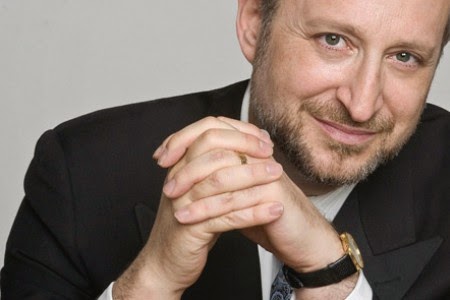Warning: may become addictive
All pleasurable activities…running, sex, swimming, competing, social media, gambling, porn(ography), meditating, etc., have the same general characteristics and neurochemistry that can lead to addiction.
Classical characteristics: a) compulsive seeking out and indulging in the activity despite negative consequences, b) “tolerance” develops so that higher and higher levels of stimulation are required, and c) unpleasant withdrawal occurs if the pleasurable activity is not available.
Warning: may become addictive
As we have seen in earlier posts, the brain is extensively plastic and can affect major changes in functioning, neural real estate reallocation and repurposing, and sometimes surprising and painful consequences. No surprise…addiction involves long-term neuroplastic change.
The blogpost “Do drugs, sex, competition and meditation use the same pleasure system?” showed that dopamine is the primary “pleasure-giving”, rewarding, neurotransmitter in the brain.
If we win a race, get an FB “like” or tweet (Blogpost “Why we love tweets and Facebook posts…”), or a “transcendent” meditative experience, we get a “hit” of dopamine. (Blogpost “How does meditation ‘work’?…”)…energy surges, exciting pleasure, bliss, openness, etc.
Dopamine, as Michael Merzenich’s research (Blogpost “How the brain continually changes and reorganizes itself”) demonstrated, consolidates and strengthens the neuronal connections responsible for the behaviors to accomplish the goal.
Merzenich demonstrated that the brain map for the behavior was enlarged. The dopamine reward for the pleasure-generating activities subsequently strengthens the neural connections for that behavior.
Michael Merzenich
UCSF Emeritus
The brain structure regulating instinctive behaviors is the hypothalamus, which functions plastically along w/the amygdala which processes emotion and anxiety. The hippocampus, which turns short-term memories into long-term ones, is also plastic.
Do the same rules of plasticity that apply to brain maps in the sensory, motor and language cortices, apply to complex maps for relationships?
Merzenich showed that complex brain maps behave plastically like simpler maps. Exposure to a single note develops a brain map to process it. A complex melody does not just stick single maps together, but develops a map that encodes the entire melody, plastically.
Eric J. Nestler
Mt. Sinai Medical Center
How does a temporary reward cause permanent changes in animal brains? Eric J. Nestler’s work on the neurobiology of cocaine addiction showed that a single dose of an addictive drug produces a protein called “delta Fos B” (FOSB) that accumulates in the neurons.
With each subsequent pleasurable event, more FOSB accumulates until a gene switch is thrown causing changes to persist, resulting in addiction. The same FOSB accumulation/switching mechanism was observed for running ( Nestler, et al. PNAS, 2001 ) and sex ( Blum, et al. 2012 ).
With the accumulation of FOSB, sensitization develops so less of the substance is required to trigger intense craving. However, tolerance also develops so that more of the experience/drug is required to produce pleasure.
Two discrete pleasure systems are at work, one for craving, another for satisfying. The latter is enhanced with endorphins (endo(genous) – (mo)rphines) closely related to opiates.
Warning: May become addictive
Our brains work on “use it or lose it”, so brain maps for new exciting, pleasurable activities increase at the expense of what had been attractive in those maps. At the “edges” of maps, neurons are “in play”, so adjacent maps can take them over as interests change.
“Pleasure centers” were discovered by Olds and Milner who observed that when an animal experienced pleasure while learning a task, it learned more easily because the threshold at which our pleasure centers activate is lowered, so it is easier to feel “great” with a given pleasure.
They also found that when pleasure centers fire, it is more difficult for nearby pain and aversion centers to fire too; things that normally would bother us, don’t any more. Pleasure makes it harder to be unhappy.
Associative “triggers” also form when dopamine strengthens neural connections. If a cocaine addict passes the alleyway where (s)he first took the drug, (s)he has intense cravings. Smelling a lover’s perfume/deodorant does the same thing.
drug delivery device
Freud compared his cocaine experiences to making love to his fiancee, Martha, saying his feelings on cocaine were like a romantic intoxication. Photos of loved ones or other triggers generate fMRI scans similar to those from cocaine. Just looking at my yoga mat generates pleasure.
Long separation from pleasure-producing activities produces depression, cravings, withdrawal, etc. as the brain plastically adapts. As the brain likes novelty, a tolerance can develop for any pleasure unless there are modifications or variations.
Neurons firing together
If the stimulus is absent and/or lack of “novelty” continues, then “unlearning” occurs. The Hebbian theory of “neurons that fire together wire together” has a corollary: “neurons unwire when they can’t simultaneously fire”.
Unlearning uses a different chemical process than learning but is critical because w/o it, our neural networks would soon saturate.
This “unlearning” can feel like the loss of a lover, or identity, which also occurs with nondual awakening as old networks unwire and are replaced by improved ones as the “I” is deconstructed w/self-inquiry . We go through grieving and pain while these billions of neural connections are rewired.
As Freud noted, reality tells us our loved one (ego/I) is gone but “its orders cannot be obeyed at once”. Grieving is a gradual process of manifesting one memory at a time, reliving it, and then letting it go, which also occurs as we do self-inquiry. (Blogpost “Surrendering the ‘I’, letting go of suffering”).
Norman Doidge
As Norman Doidge says in The Brain That Changes Itself, “we are turning on each of the neural networks that were wired together to form our perception of the person (ego/I), experiencing the memory with exceptional vividness, then saying good-bye one network at a time”.
In our grief, we learn the hard lesson of living w/o the one we love. The lesson is hard because we must first “unlearn the idea that the person (ego/I) exists.”
So why did FOSB-enhanced, pleasure-memory systems, now called addictions (w/negative connotations) evolve? Arguably, it was to support evolutionarily-adaptive behaviors w/“good”/useful outcomes, i.e. sex, exercise, competing, connecting with others, etc. What has changed is the electronic, virtual and pharmaceutical replacement, on demand, of the body’s natural pleasure-inducing systems w/problematic consequences.
By my late 20s, i just wanted to be always happy, which seemed unattainable. i had already had a lifetime’s supply of suffering, and i really didn’t care for it. Just how does one create lasting happiness?
Ramana Maharshi
As the Universe would have it, Ramana Maharshi’s 6-page pamphlet, “Who Am I?” manifested, which begins “As all living beings desire to be happy always, without misery…”. Looking at his picture, i resolved to do this work, and it was successful.
I got great pleasure from yoga and self-inquiry meditation and discovered that if i practiced until something like a “runners’ high” was reached at about 35 minutes of sitting, i would repeat it again and again.
Every day i sat until that blissful pleasure manifested. i knew nothing of FOSB, neural synapses, or Hebbian theory, but it became “addictive”, which sustained the practice for many thousands of hours until the state Ramana described appeared…and then it fell away into whatever spontaneously manifests.




















